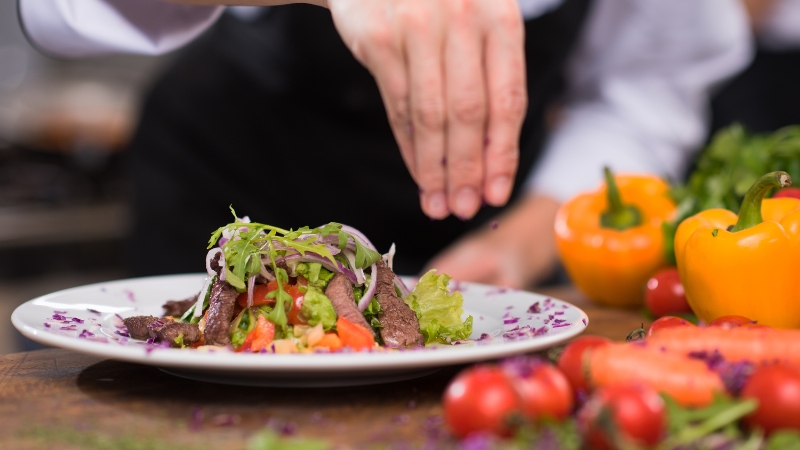Restaurant meals feel special because of flavor, presentation, and atmosphere.
Small adjustments at home can create that same experience without requiring a professional kitchen.
With a handful of mindful techniques, any dish can reach a higher level.
Get ready to impress yourself and your guests with these ten simple tricks.
1. Prioritize Ingredient Quality
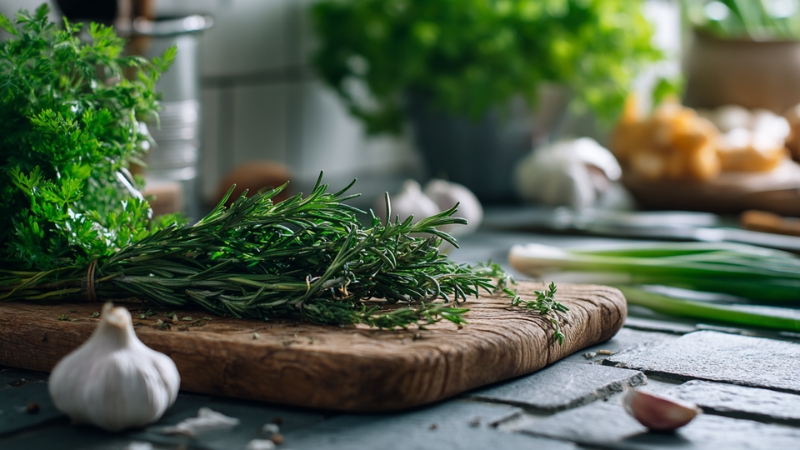
High-end cooking begins with what goes into the pot, pan, or oven. Using produce at its peak guarantees flavor and texture that cannot be faked.
A tomato grown locally in summer bursts with sweetness, while one out of season feels flat and watery. Investing in proper oils, vinegars, and dairy builds a stronger foundation.
Imagine roasted vegetables finished with a drizzle of extra-virgin olive oil compared to a generic alternative; it transforms the dish instantly.
Spices deserve special attention because they lose character quickly. Whole peppercorns ground fresh taste vibrant compared to pre-ground jars sitting for months.
Choosing small-batch blends keeps flavors alive. Proteins also benefit from quality sourcing; grass-fed beef, organic chicken, or wild-caught fish carry natural complexity.
For inspiration from restaurants that highlight seasonal, high-quality ingredients, check out Tender at the Stock Exchange Hotel at https://www.stockexchangehotel.co.uk/food-beverage/tender-by-niall-keating
Key upgrades to consider:
2. Season in Layers, Not Just at the End
A balanced dish develops flavor step by step. Adding salt only at the finish creates a sharp, surface-level taste.
When seasoning in stages, each component absorbs flavor while retaining its character.
Onions softening in a pan, for instance, need a small pinch early on to bring out their sweetness. Proteins benefit from seasoning before searing, which enhances the crust.
Acidity balances richness. A squeeze of lemon brightens roasted chicken, while a splash of vinegar sharpens a stew.
Finishing salts like Maldon or fleur de sel add crunch and complexity in the final bite, contrasting beautifully with tender food beneath.
Helpful practices include:
3. Master the Art of Searing
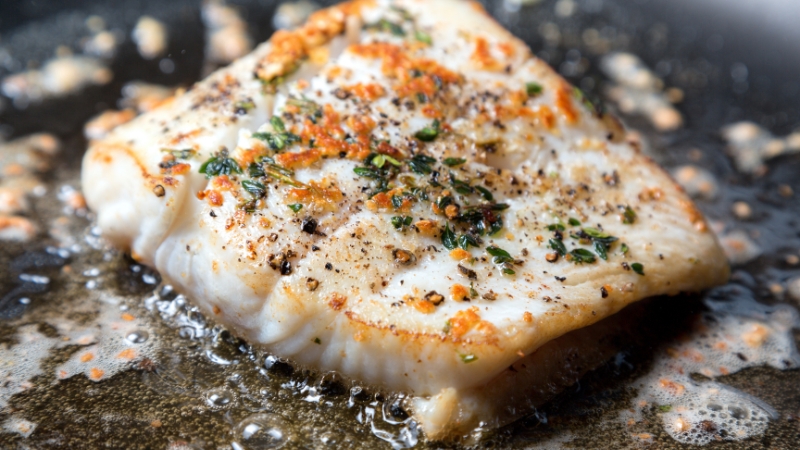
A perfect sear signals skill and care. Proteins should be dry before hitting the pan, as moisture prevents browning.
A hot skillet allows the Maillard reaction to occur, producing that irresistible nutty, savory flavor.
Patience is key; rushing and flipping too soon results in pale food lacking character.
Crowding the pan creates steam, preventing caramelization. Leaving space ensures every piece develops a crisp crust while staying tender inside.
Searing goes beyond steak. Mushrooms benefit enormously, releasing moisture and gaining concentrated flavor. Fish fillets achieve a delicate golden crust, while cabbage wedges char into sweet, smoky bites.
Guidelines for success:
4. Build Layers of Flavor
Memorable dishes rarely rely on a single note. Beginning with aromatics like garlic, onions, or shallots lays a foundation.
As food cooks, deglazing the pan with wine, broth, or even water collects the browned bits stuck at the bottom, turning them into liquid gold for sauces.
Umami-rich ingredients provide depth that lingers.
A spoonful of miso in a soup, Parmesan stirred into risotto, or soy sauce added to a glaze all create long-lasting savoriness.
Restaurants use layering to produce flavors that feel complete and balanced without being overwhelming.
Examples of layering techniques:
5. Plate on the Right Canvas
A beautifully prepared dish loses impact on the wrong plate. White or light-colored plates highlight:
Patterns or dark designs distract and draw attention away from the food itself. Minimalist tableware frames the meal, allowing it to shine.
Consider the effect of plating a bright green pea purée on a white plate versus a patterned one.
On white, the green feels striking and fresh. On patterned, the visual energy of the design competes, making the dish look less refined.
Restaurants choose dishware carefully for this reason.
Guidelines for plating canvas:
6. Play with Portion and Plating Space
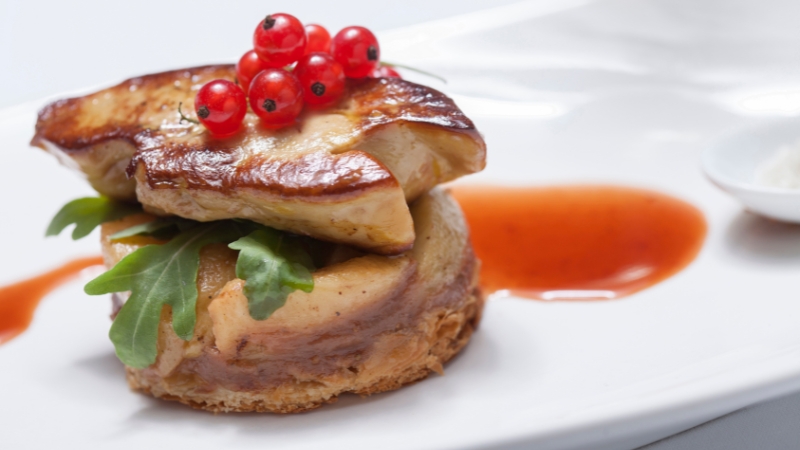
Presentation often depends on restraint. Crowding creates chaos, while spacing produces elegance.
Using the rule of thirds when arranging food guides the eye naturally across the plate.
Smaller portions feel refined and deliberate, unlike oversized mounds that suggest quantity over quality.
Negative space makes food look intentional. A perfectly seared salmon placed slightly off-center with a drizzle of sauce on one side and a few vibrant vegetables on the other tells a story of balance.
Even simple dishes look elegant when plated with care.
Helpful practices:
7. Use Height for Visual Interest
Flat presentation feels plain. Stacking creates drama and elegance.
A base layer of grains, a middle of sautéed vegetables, and a crown of protein topped with a sauce creates immediate dimension.
Height naturally attracts attention, making a plate feel refined.
Tools can assist in structure. Plating rings keep stacks neat, while cookie cutters shape softer components like mashed potatoes or rice.
Even rustic dishes look elevated when given intentional height.
A tower of roasted root vegetables topped with grilled chicken and finished with a drizzle of sauce adds excitement without being complicated.
Key techniques for height:
8. Garnish Like a Chef
View this post on Instagram
A garnish provides both flair and flavor. Fresh herbs like parsley, basil, or chives bring color and aroma.
Microgreens or edible flowers add sophistication while staying edible. Crunchy toppings such as toasted nuts or seeds add texture and contrast.
Chefs often finish with a drizzle of high-quality olive oil or a dusting of cheese grated so finely it resembles snow.
Each garnish should connect to the dish itself.
A basil leaf complements tomato pasta, while toasted sesame seeds enhance an Asian-inspired stir fry.
Best garnish practices:
9. Add the Perfect Finishing Touch
No restaurant plate leaves the kitchen without refinement. A simple drizzle, zest, or sprinkling can elevate even a weeknight dinner.
Citrus zest brightens seafood or poultry.
Herbed butter melted over steak adds richness and aroma. Flavored oils enhance vegetables with complexity.
Keeping a collection of special ingredients on hand makes finishing effortless. Truffle salt adds intrigue to mashed potatoes.
Balsamic glaze drizzled over roasted vegetables provides sweetness and acidity. Nut oils bring warmth to salads or grains.
Finishing touch ideas:
10. Make Every Dish Instagram-Ready
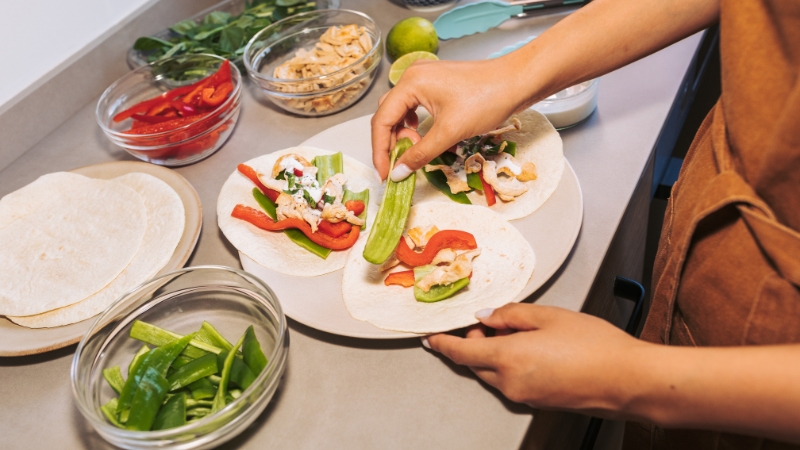
Visual impact matters as much as taste. A wiped plate edge looks professional compared to one with streaks.
Squeeze bottles or spoons allow sauces to be applied with precision, creating swipes, dots, or drizzles that add artistry.
Contrast is essential. A golden crust against a white plate or a green herb against a red sauce creates vibrant energy.
Thinking like an artist brings balance through color, shape, and proportion. Food that looks appealing excites the diner before the first bite.
Quick tips for Instagram-ready dishes:
The Bottom Line
Restaurant-quality meals at home come down to intention, detail, and technique. Ingredients, plating, and finishing touches matter more than complicated recipes.
Small upgrades practiced consistently make an enormous difference.
Experiment with one or two of these tricks at a time, and soon every dinner will feel elevated.
With creativity and care, your next home-cooked meal could easily rival a favorite bistro.

